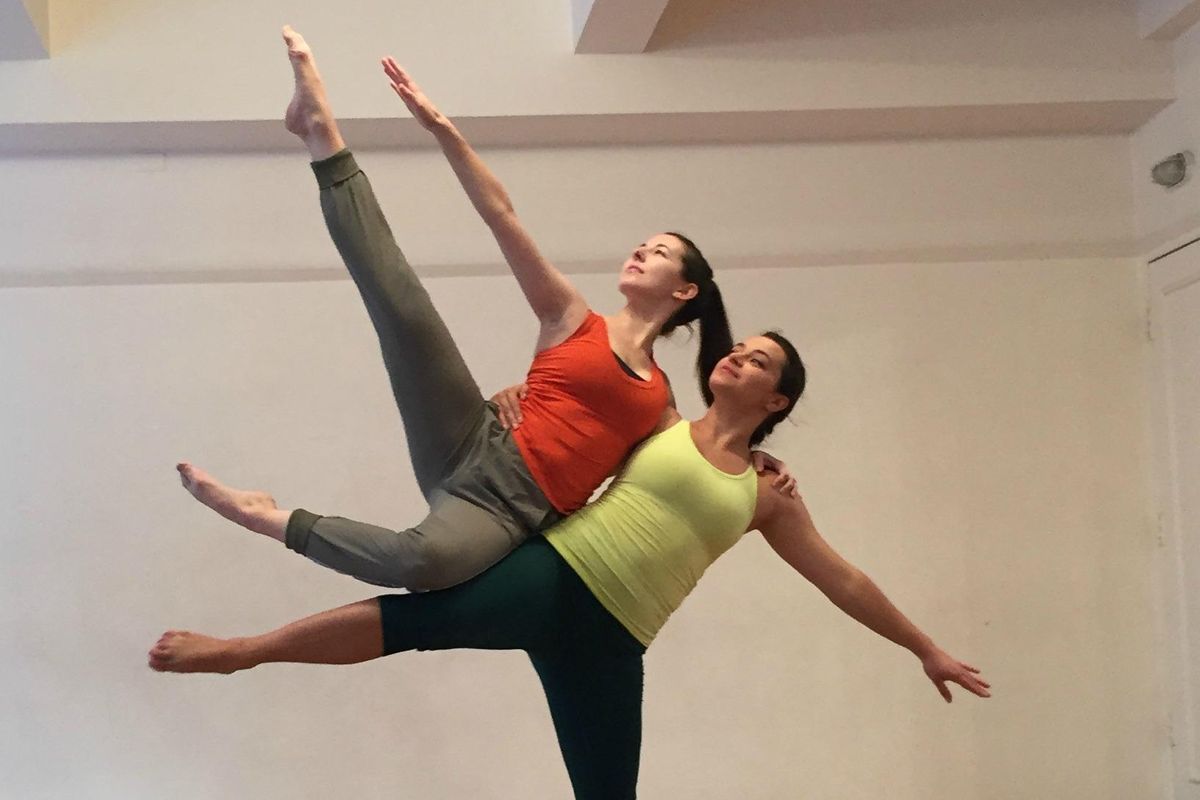
The pressure for female dancers to be slim and feather-light is often at odds with their need to be strong. This contradiction is especially misleading in partnering. “Sometimes, a woman who has more muscle mass may weigh more but is actually easier to lift because she’s stronger,” says Matt Kent, associate artistic director of Pilobolus. “You don’t want to be a sack of sand. Any male Pilobolus dancer can tell you the difference between lifting with a woman who has that kind of strength and one who doesn’t.”
Emily Kent (Matt’s wife), who teaches master classes in the company’s acrobatic technique, says it often isn’t even the partner’s job to do the lifting. Take, for example, when choreography has a dancer wrap around her partner’s waist or shoulders. “You’re responsible for holding yourself up on them,” Emily says. That requires an immense amount of strength and stability throughout the core, shoulders and legs
In a company like Pilobolus, where often the women are the ones doing the lifting, Matt says female dancers who audition should be able to do at least one pull-up, hold a plank for minutes on end and whiz through all variations of push-ups—no knees. That is the base level of fitness that needs to be built before the dancer can begin her dream gig.
Beth Lewis, for example, who toured with Pilobolus from 2009 to 2012, started out not only trained as a dancer, but in soccer, gymnastics, martial arts and swimming, as well. Today, she has multiple certifications in functional strength training and teaches fitness and rowing classes in New York City. She recommends three functional strength exercises for female dancers—whose flexibility can often exceed their strength—specifically to improve their partnering. And she recommends rowing for dancers looking for a no-impact way to build leg strength.
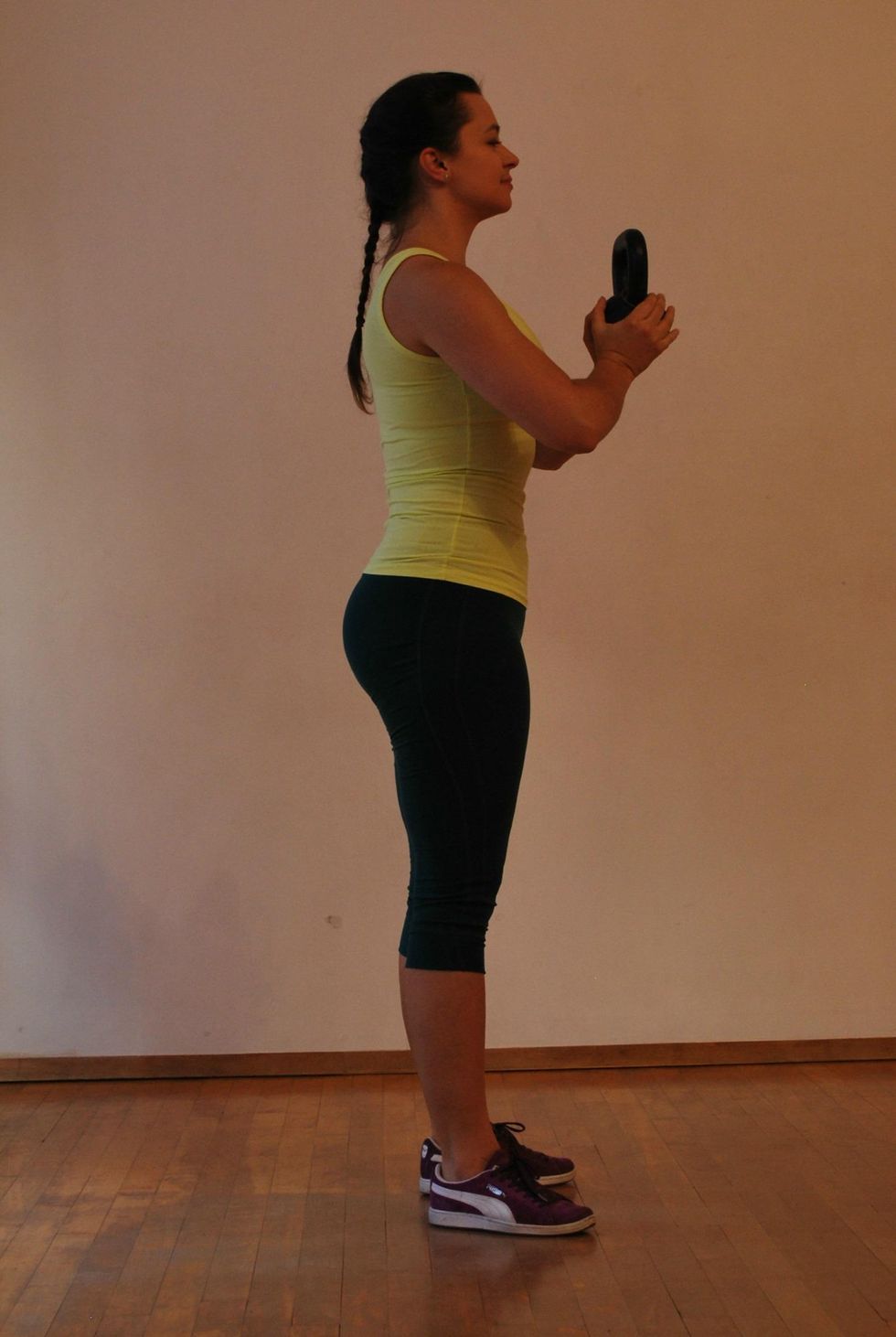 Maintain a natural curve in the lower back. (No tucked pelvis!)
Maintain a natural curve in the lower back. (No tucked pelvis!)
Pause Goblet Squat
For leg and hip strength while facilitating hip mobility. “Sometimes you have to get under another human to lift them,” Lewis says. “If your legs aren’t strong enough, it’s either not going to happen or the lifting dancer will be injured.”
1. Use a medium-size dumbbell or kettlebell, starting around 15 pounds. “Don’t be afraid to grab something with a little weight,”
Lewis says. “This will not make your legs bulky.”
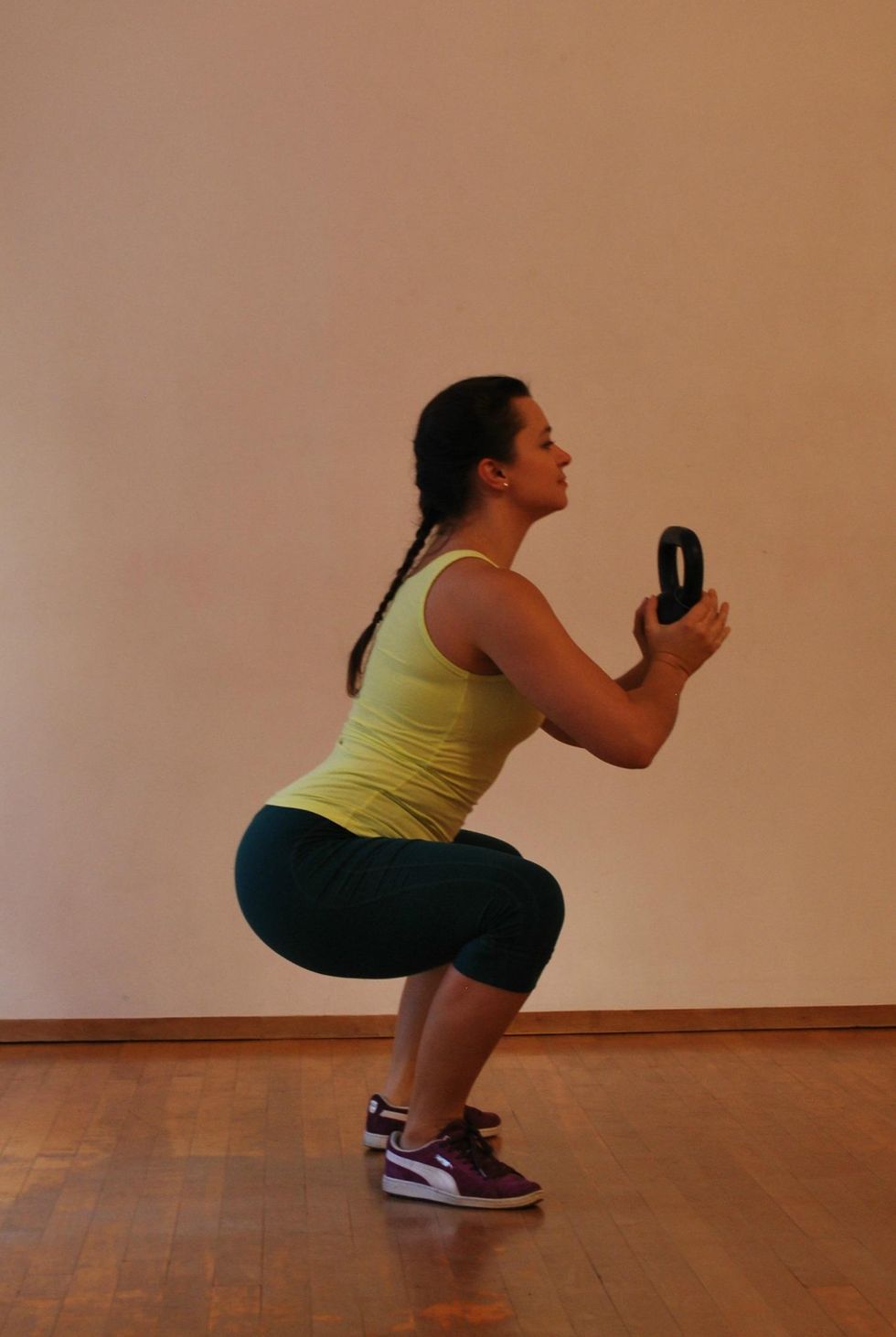 Do not relax into your flexibility at the bottom of the squat. This won’t help you get stronger.
Do not relax into your flexibility at the bottom of the squat. This won’t help you get stronger.
2. Hold it up to your collar bone with both hands, elbows out to the side, in what’s known as a front rack position. Feet should be shoulder-width apart, toes turned out only about 30 degrees.
3. Take three counts to bend the knees, lowering straight down to the bottom of your squat. Allow the torso to tip slightly forward, and go as low as you can while keeping constant tension in the legs. Imagine ripping the floor apart with your feet. Hold three counts at the lowest point, then come up on one count. Do five or six reps, three or four times.
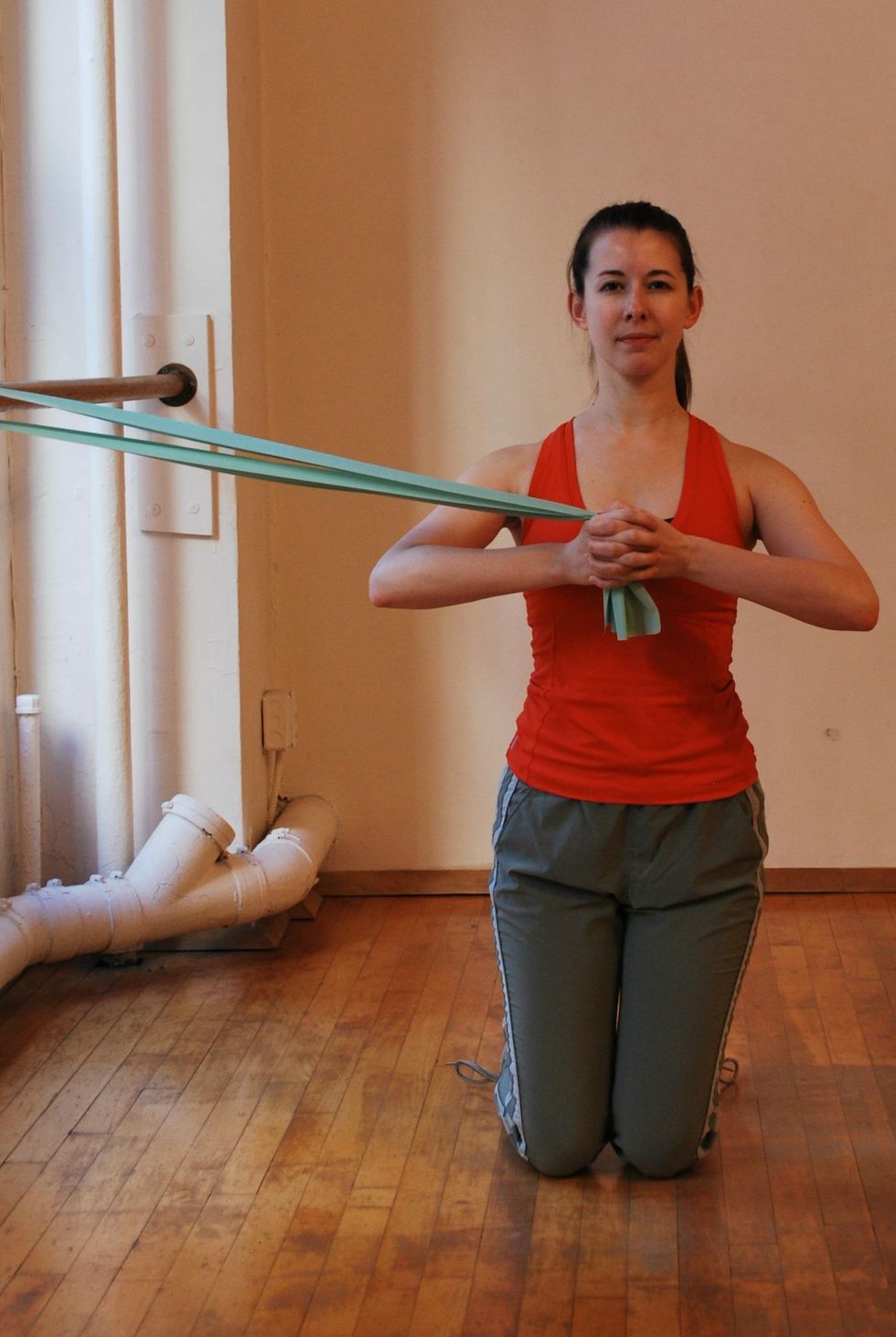 For this exercise, be careful not to arch the lumbar spine.
For this exercise, be careful not to arch the lumbar spine.
Kneeling Pallof Press
For core strength that goes beyond the abs and obliques to build stability in the entire trunk, including the lats, gluteus medius and minimus, adductors and more. Being able to hold a rigid trunk makes a dancer feel lighter when lifted.
1. Attach a medium-resistance band
(ideally one with a handle) to a stable anchor, like a barre. The band should be parallel to the floor.
2. Pulling the band, step away from the barre to create some resistance, and come down to your knees with your body perpendicular to the barre and parallel to the band.
 This exercise can be done standing, for a more advanced variation.
This exercise can be done standing, for a more advanced variation.
3. Bring the band across your chest and hold it at the center of your breastbone, fingers interlaced around the handle. Drop the rib cage, squeeze the knees against each other and keep a long neck with shoulders down.
4. Press the handle forward, straight out in front of your breastbone without allowing the trunk to twist. Straighten the elbows and hold for two counts before bringing it back to your chest without giving in to the resistance. Do two to three sets of 8 to 10 reps.
Push-up, Plus
For building upper-body strength and shoulder stability, both essential to lift and be lifted.
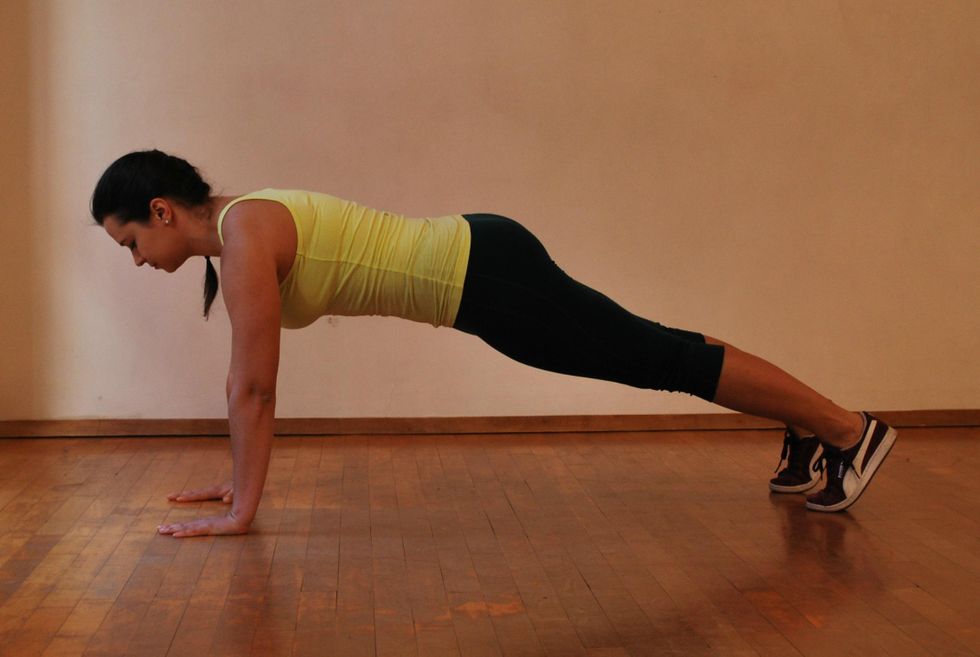
1. Start in a regular push-up position, with shoulders over the wrists, either with legs straight or on your knees, the head in line with the neck (not hanging down).
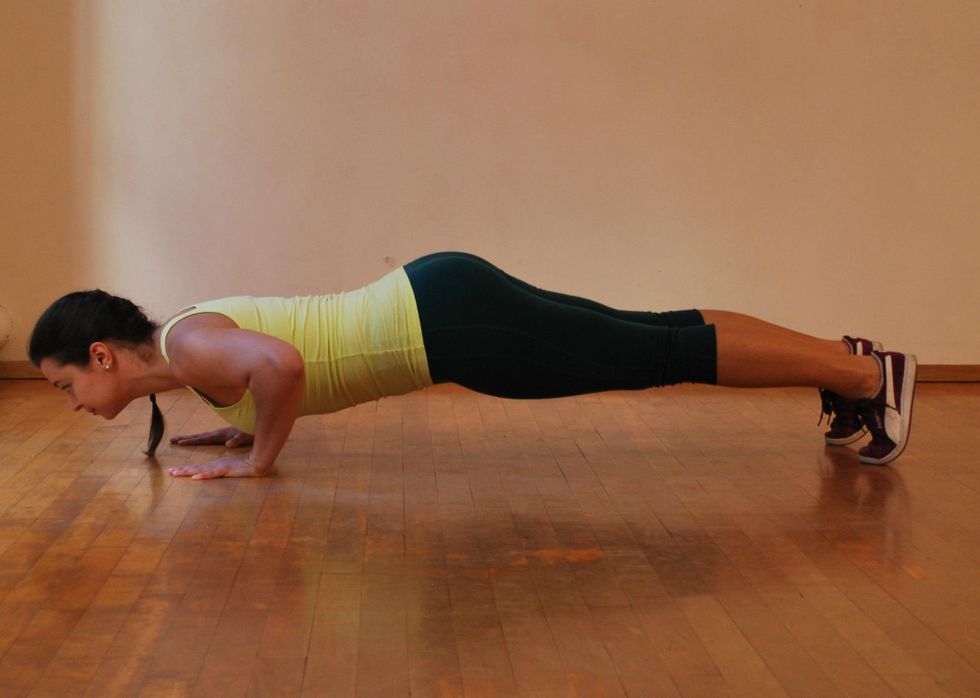
2. Lower down slowly, for at least three counts. Let the shoulder blades come together slightly on your back, keeping the tops of the shoulders away from your ears. Elbows go out to the sides to engage the pectorals.

3. Hold for a count at the bottom, then press up in a single count.
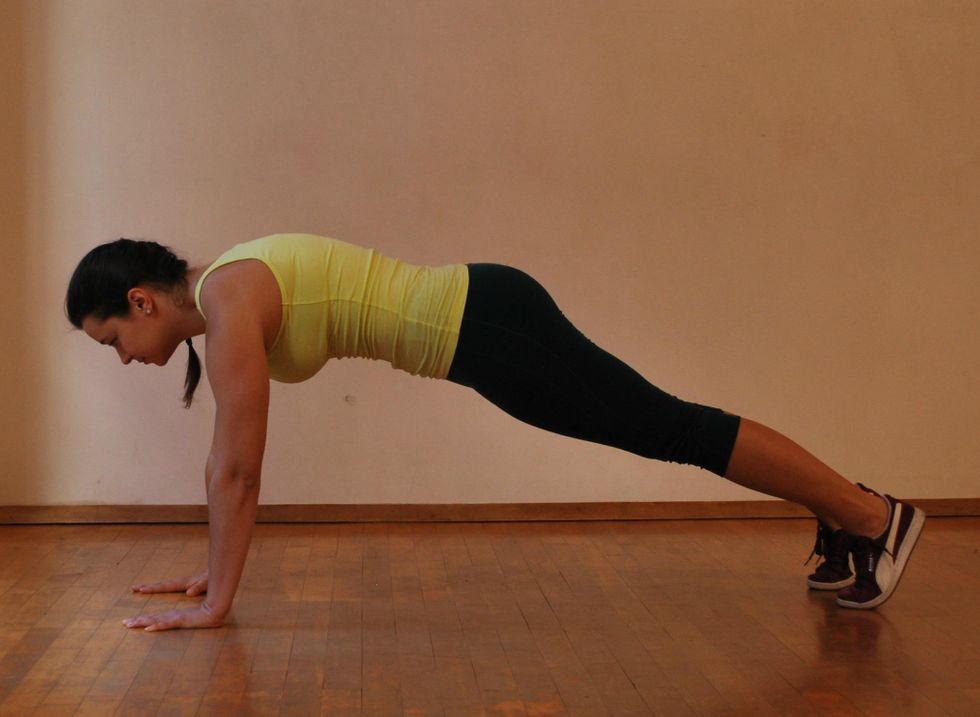
4. At the top of the push-up, spread your shoulder blades apart and curve the back, thinking of creating a dome in your upper back to activate your shoulder stabilizers.
5. Return to the starting position. Start with a couple sets of four to eight reps. Just make sure you aren’t sacrificing technique.
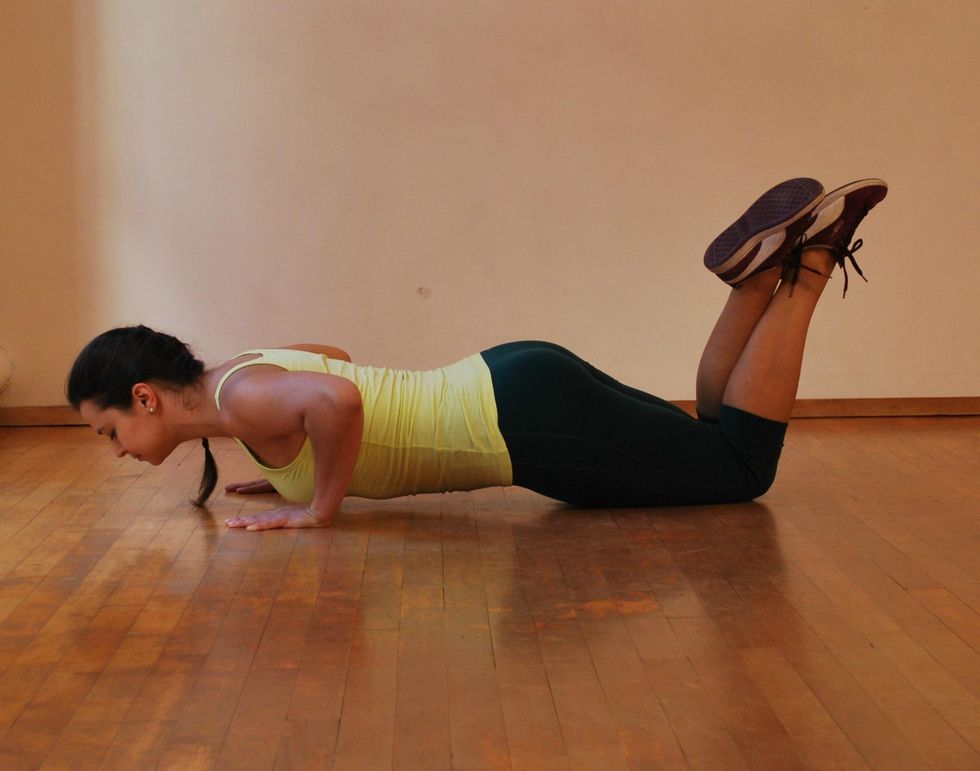 If your stomach is leading on the way down, drop to your knees. You are still building strength this way.
If your stomach is leading on the way down, drop to your knees. You are still building strength this way.




